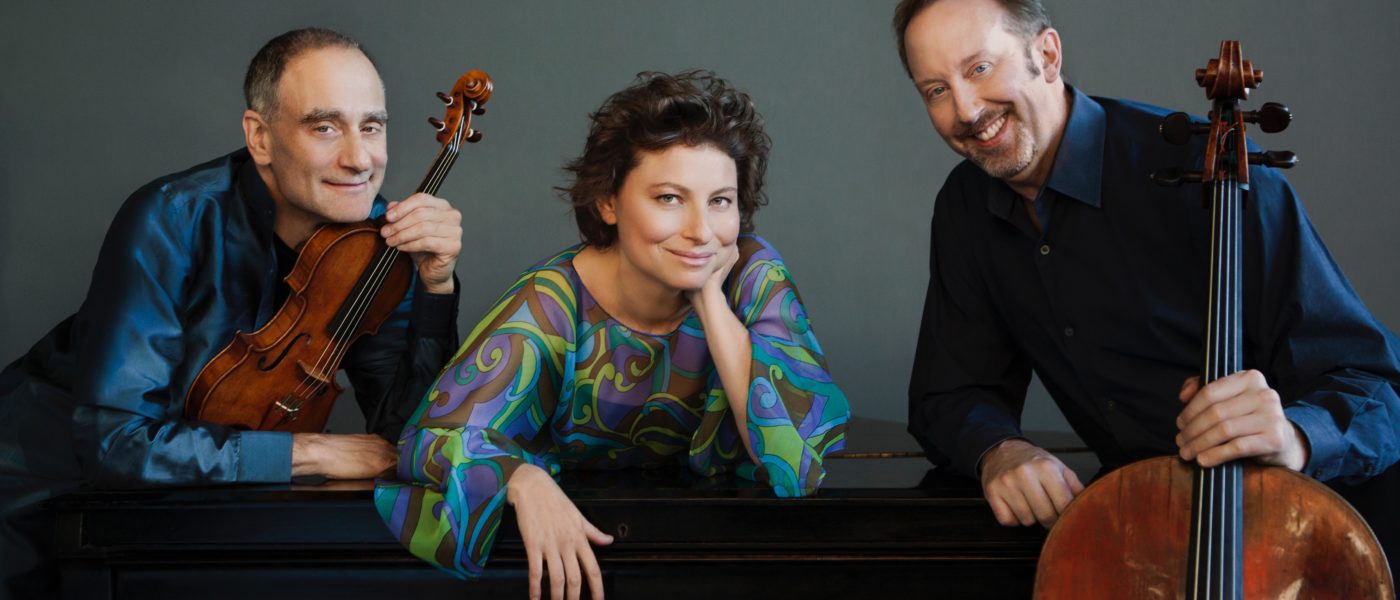The Peggy Rockefeller Concerts presents Weiss-Kaplan-Stumpf Trio in Review
The Peggy Rockefeller Concerts presents Weiss-Kaplan-Stumpf Trio
Yael Weiss, piano; Mark Kaplan, violin; Peter Stumpf, cello
Caspary Auditorium at The Rockefeller University, New York, NY
November 3, 2016
One feels either elevated or hopelessly inadequate, intellectually, when stepping into the semi-private enclave that is Rockefeller University on New York’s East Side. Nobel Prize laureates (and future ones) lurk around every corner. The motto of the university is “Science for the benefit of humanity” and the Peggy Rockefeller concert series continues with the “arts for humanity” as well. The audience for this concert was quite elderly, which does not bode well for these types of events in general, and the concerts take place in a strangely shaped, steeply raked lecture hall not designed for music, although on this occasion the sound was beautiful.
Thursday’s November 3rd concert featured the Weiss-Kaplan-Stumpf Trio, and was a wonderfully refined presentation of three of Beethoven’s output for piano trio, one from each style period: early, middle, and late. These three players (Yael Weiss, piano; Mark Kaplan, violin; Peter Stumpf, cello) play with uncanny unity, blend, and never the sense of any one member being “in front.”
First on the program was the all-too-rarely programmed Variations in E-flat major, Op. 44. This work begins with a gauntlet flung at the players by the impish Beethoven: fifteen measures of absolute octave/unison playing (eighth note followed by eighth rest) for all three players, with no smaller note values to indicate the tempo. The three musicians were totally in sync, as they were throughout the evening. Elsewhere in the work, bits of figuration or harmony that recall Op. 79’s finale, the clarinet trio Op. 11, the Eroica theme, and even the “Emperor” piano concerto are found in their infancy, so to speak. The trio brought great sparkle and polish to a neglected work.
There followed the second of Beethoven’s Op. 1 piano trios, the one in G major. The balance was gorgeous, but it led me to think about Beethoven’s notorious “rough edges” as a pianist, and that he would probably not have subordinated himself as much as Ms. Weiss did. Nor would he have rounded every single phrase off with such taper. The piano sounded, in fact, somewhat distant, something I attributed to the Hamburg Steinway D, incapable of making a harsh sound, especially when played with such elegance as Ms. Weiss possesses. The Presto Finale was ebullient, taken at a great clip, with humor abounding.
After intermission, the great Piano Trio in B-flat major, Op. 97, nicknamed “Archduke,” formed the entire half. Here everything was completely in its place, as had been everything in the concert previously. I did feel that the group lacked a certain spontaneity in the act of creating (I apologize for being so churlish), perhaps they were being careful because the concert was being recorded. Dynamics seemed unexaggerated to me, and everything was very “planned,” which gave a CD quality performance, that was somehow too polished. If the pianist is going to use an iPad, as I am increasingly seeing in concerts great and small, then she should also invest in AirTurn, so that her fingers don’t need to leave the keys to “turn” the electronic page, which is the point anyway. The transition from the rapt slow movement’s theme and variations into the concluding romp of a peasant dance was beautifully rendered.
After three curtain calls (no curtain), they retook the stage to give an encore, and sheepishly realized they didn’t have the music for it. “Next time,” was violinist’s Mark Kaplan’s wry answer.

